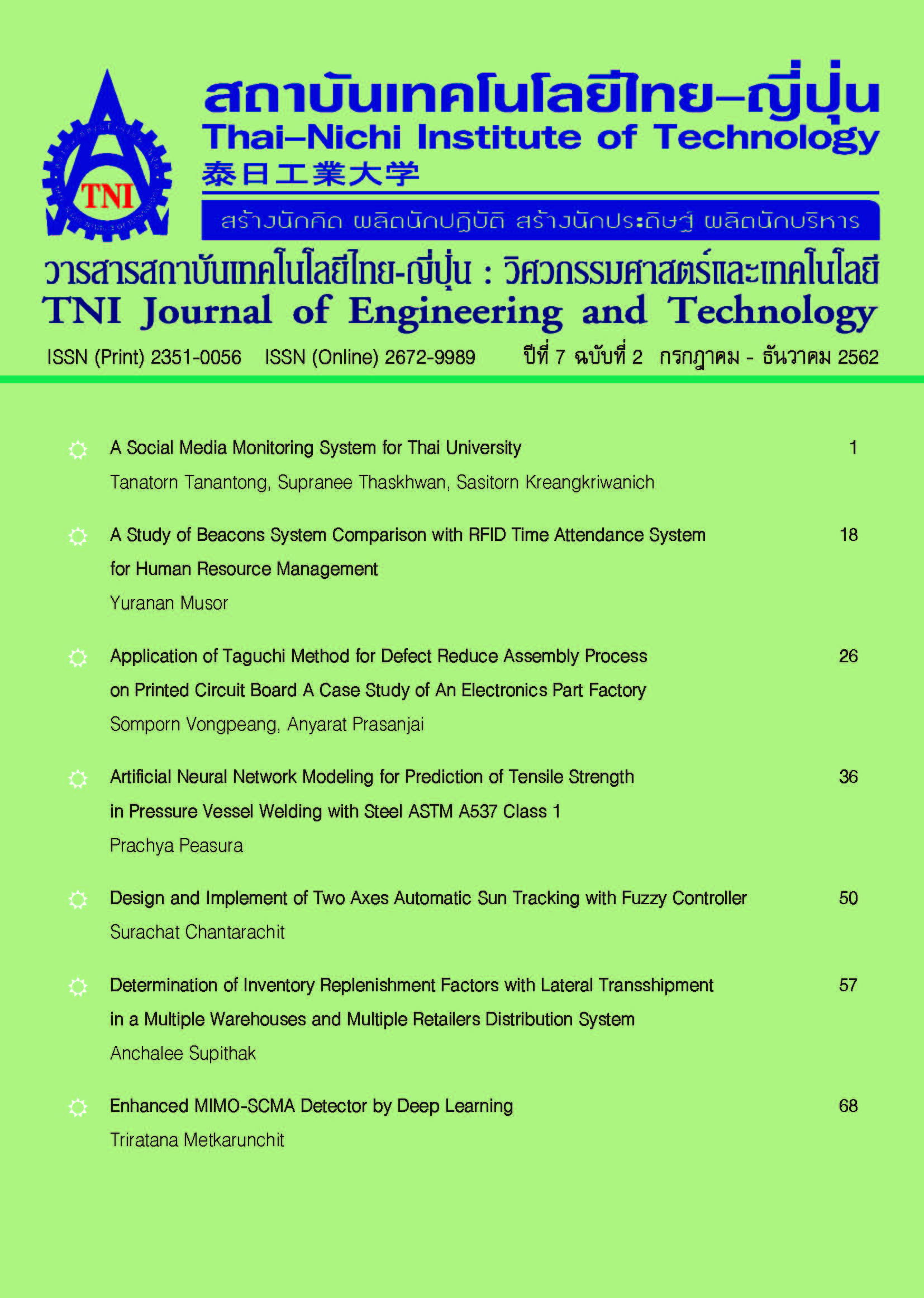Investigation of Energy Conservation Potential for Convenience Stores in Thailand
Main Article Content
Abstract
The convenience stores in Thailand presents its continuing growth in both urban and rural areas. The stores possess various electric equipment for refrigeration, air-conditioning, lighting, cooking, with 7/24 service; resulting in high electricity demand. Those stores have been persistently conducted energy conservation; however, there is still a great potential for energy consumption reduction.
This research conducted detailed energy auditing to investigate the energy usage and its influencing factors. Nine convenience stores participated in the study. The results showed that the stores consumed electricity at 173,284 kWh/year, average peak power 20 kW, energy intensity 823 kWh/m2.year. The refrigeration shares 59–64% of the total energy consumption. The air-conditioning came the second with the consumption of 26-28% while the electric lighting consumed about 5%. This study proposed eight energy conservation measures including (1) Reflective ceramics painted roof, (2) Insulated roof for heat resistance, (3) Solar photovoltaic rooftop, (4) Reduction of glazed area, (5) inverter air-conditioner, (6) Inverter compressor for refrigerated open showcase, (7) Inverter compressor for walk-in cold room, and (8) 3-layers glass for walk-in cold room.
A mathematical model was developed for the store to present the energy usage in each system and the whole shop. For Thailand, the estimated conserved energy in the standalone and the commercial building’s store, implementing particular measure and combined measures, from 2019 – 2027 is about 9.9%. Therefore, these measures should be further evaluated for their investment worthiness.
Article Details
Article Accepting Policy
The editorial board of Thai-Nichi Institute of Technology is pleased to receive articles from lecturers and experts in the fields of engineering and technology written in Thai or English. The academic work submitted for publication must not be published in any other publication before and must not be under consideration of other journal submissions. Therefore, those interested in participating in the dissemination of work and knowledge can submit their article to the editorial board for further submission to the screening committee to consider publishing in the journal. The articles that can be published include solely research articles. Interested persons can prepare their articles by reviewing recommendations for article authors.
Copyright infringement is solely the responsibility of the author(s) of the article. Articles that have been published must be screened and reviewed for quality from qualified experts approved by the editorial board.
The text that appears within each article published in this research journal is a personal opinion of each author, nothing related to Thai-Nichi Institute of Technology, and other faculty members in the institution in any way. Responsibilities and accuracy for the content of each article are owned by each author. If there is any mistake, each author will be responsible for his/her own article(s).
The editorial board reserves the right not to bring any content, views or comments of articles in the Journal of Thai-Nichi Institute of Technology to publish before receiving permission from the authorized author(s) in writing. The published work is the copyright of the Journal of Thai-Nichi Institute of Technology.
References
bank/getmedia/f1e844b6-74af-44df-9ba4-23dc9d0f7427/IO_
Modern_Trade_2017_TH.aspx. [accessed: May 31, 2017].
[2] Prachachat Thurakit, “7-11 remark large market share
speed up to 13,000 stores online penetration.” (In Thai). [Online]. Available: https://www.prachachat.net/marketing/
news-36540. [Accessed: 11-Oct-2019].
[3] Saiseenews, “Announce legend of Thai 7-11 that anyone love!!.” (In Thai). [Online]. Available: http://www.saiseenews.
com/. [accessed: Jun 02, 2017].
[4] Eric Bonnema, Matt Leach, and Shanti Pless, “Technical Support Document: Development of the Advanced Energy Design Guide for Medium to Big Box Retail Buildings – 50% Energy Savings”, National Renewable Energy Laboratory (NREL). Available: https://www.nrel.gov/docs/fy13osti/52589.
pdf. [accessed: Jun 02, 2017].
[5] New Energy and Industrial Technology Development Organization (NEDO), “Feasibility Study on Green Convenience Stores with High-Efficiency Equipment in Thailand and Vietnam”, in Feasibility Studies with the Aim of Developing a Bilateral Offset Credit Mechanism FY2012. NTT DATA INSTITUTE OF MANAGEMENT CONSULTING, INC, 2012.
[6] D. Chou, C.-S. Chang, and Y.-Z. Hsu, “Investigation and analysis of power consumption in convenience stores in Taiwan,” Energy and Buildings, Vol. 133, pp. 670–687, Dec. 2016.


